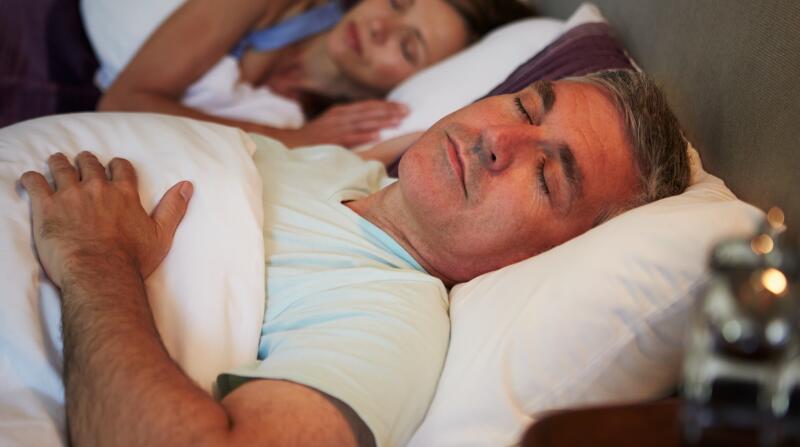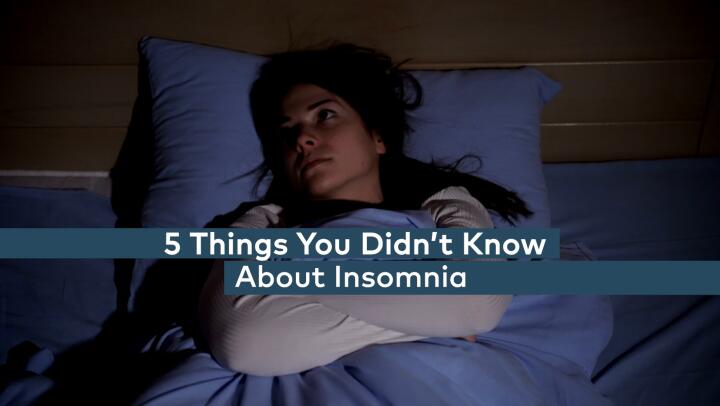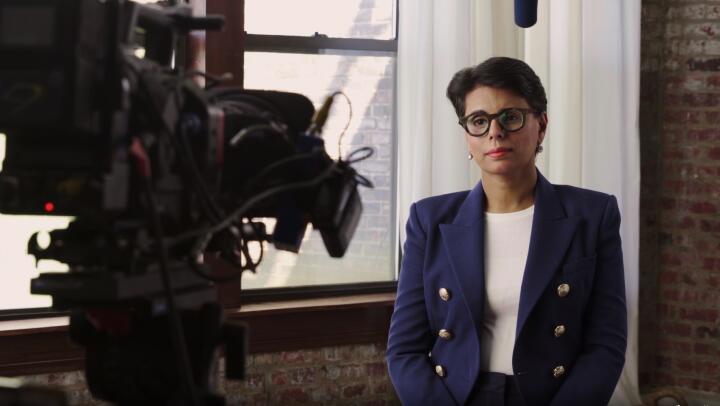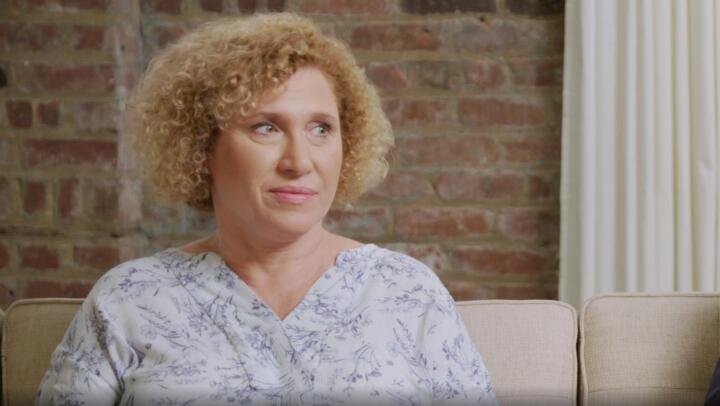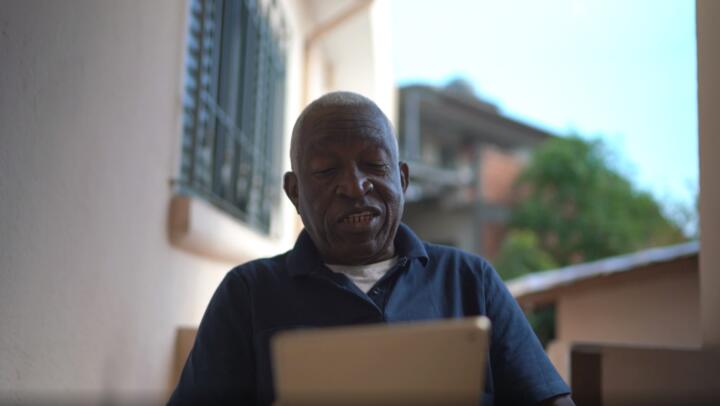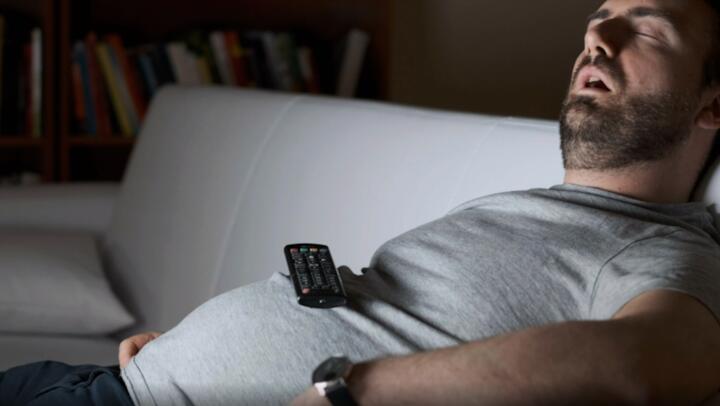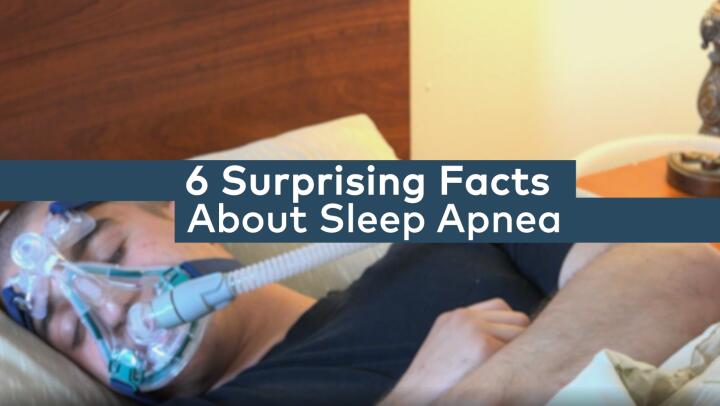10 Surprising Facts About Sleep Apnea

Medically Reviewed By William C. Lloyd III, MD, FACS
Written By Jennifer Larson on September 18, 2022
-
 Would a sleep apnea diagnosis surprise you?If you’re exhausted every day and you can’t quite figure out why, you might suffer from an undiagnosed case of sleep apnea. Sleep apnea, a condition in which your breathing repeatedly stops and starts while you’re sleeping, affects at least 18 million adults in the U.S., according to estimates from the National Sleep Foundation. But many people don’t even realize they have sleep apnea; in fact, about 80% of people with this condition go undiagnosed. Learn about your own risk factors for sleep apnea, since there are a variety of possible sleep apnea treatments that could help you get a good night’s sleep once again. And by treating sleep apnea, you’ll also decrease your risk for other related health conditions like cardiovascular disease and diabetes.
Would a sleep apnea diagnosis surprise you?If you’re exhausted every day and you can’t quite figure out why, you might suffer from an undiagnosed case of sleep apnea. Sleep apnea, a condition in which your breathing repeatedly stops and starts while you’re sleeping, affects at least 18 million adults in the U.S., according to estimates from the National Sleep Foundation. But many people don’t even realize they have sleep apnea; in fact, about 80% of people with this condition go undiagnosed. Learn about your own risk factors for sleep apnea, since there are a variety of possible sleep apnea treatments that could help you get a good night’s sleep once again. And by treating sleep apnea, you’ll also decrease your risk for other related health conditions like cardiovascular disease and diabetes. -
 1. There’s more than one type of sleep apnea.You may assume there’s only one kind of sleep apnea: obstructive sleep apnea, the most common type. But there are actually two main types of sleep apnea: obstructive sleep apnea and central sleep apnea. With obstructive sleep apnea, the upper way gets blocked or partially blocked while you sleep, but with central sleep apnea, your brain is the culprit because it doesn’t tell your muscles to breathe. Some experts even include a third type of sleep apnea: complex sleep apnea syndrome. The signs and symptoms can overlap, but they each have their own unique characteristics and require different treatments.
1. There’s more than one type of sleep apnea.You may assume there’s only one kind of sleep apnea: obstructive sleep apnea, the most common type. But there are actually two main types of sleep apnea: obstructive sleep apnea and central sleep apnea. With obstructive sleep apnea, the upper way gets blocked or partially blocked while you sleep, but with central sleep apnea, your brain is the culprit because it doesn’t tell your muscles to breathe. Some experts even include a third type of sleep apnea: complex sleep apnea syndrome. The signs and symptoms can overlap, but they each have their own unique characteristics and require different treatments. -
-
 2. You can experience hundreds of episodes in a single night.When your body temporarily stops breathing—this episode is known as an apnea—your blood oxygen levels drop abruptly. Your brain responds to that big drop in oxygen levels by temporarily rousing your body from sleep. This temporary arousal restarts your body’s normal breathing. But it fragments the quality of your sleep, especially since it can and often does happen hundreds of times over the course of the night. That’s why you feel so exhausted the next day.
2. You can experience hundreds of episodes in a single night.When your body temporarily stops breathing—this episode is known as an apnea—your blood oxygen levels drop abruptly. Your brain responds to that big drop in oxygen levels by temporarily rousing your body from sleep. This temporary arousal restarts your body’s normal breathing. But it fragments the quality of your sleep, especially since it can and often does happen hundreds of times over the course of the night. That’s why you feel so exhausted the next day. -
 3. Sleep apnea: It’s not just for men.Do you associate sleep apnea with men, especially older men? It’s true that men, especially middle-aged and older overweight men, are more likely to be diagnosed with sleep apnea. But women and even children can experience sleep apnea, too. Obstructive sleep apnea affects about 24% of men, but it also affects about 9% of women. And it even affects about 2% of children, usually in early childhood, according to the American Academy of Sleep Medicine.
3. Sleep apnea: It’s not just for men.Do you associate sleep apnea with men, especially older men? It’s true that men, especially middle-aged and older overweight men, are more likely to be diagnosed with sleep apnea. But women and even children can experience sleep apnea, too. Obstructive sleep apnea affects about 24% of men, but it also affects about 9% of women. And it even affects about 2% of children, usually in early childhood, according to the American Academy of Sleep Medicine. -
 4. Obesity is a major risk factor.Obesity isn’t the only risk factor for obstructive sleep apnea, but it’s definitely a major risk factor. If you are overweight, with a Body Mass Index (BMI) between 25 and 29.9, or obese, with a BMI above 30, you are more likely to develop this type of sleep apnea. Why? You’re more likely to have fat deposits in your neck and throat area that can block your upper airway and interrupt your breathing pattern while you’re sleeping.
4. Obesity is a major risk factor.Obesity isn’t the only risk factor for obstructive sleep apnea, but it’s definitely a major risk factor. If you are overweight, with a Body Mass Index (BMI) between 25 and 29.9, or obese, with a BMI above 30, you are more likely to develop this type of sleep apnea. Why? You’re more likely to have fat deposits in your neck and throat area that can block your upper airway and interrupt your breathing pattern while you’re sleeping. -
 5. The size of your neck matters.If you struggle to find shirts that fit comfortably around your neck, that’s not your only problem. You may also be at increased risk for developing obstructive sleep apnea. A general guide is that a 17-inch neck circumference for men and 16 inches for women is the threshold.
5. The size of your neck matters.If you struggle to find shirts that fit comfortably around your neck, that’s not your only problem. You may also be at increased risk for developing obstructive sleep apnea. A general guide is that a 17-inch neck circumference for men and 16 inches for women is the threshold. -
-
 6. Your tonsils could be the culprit.If you have large tonsils, they could potentially obstruct part of your airway and contribute to episodes of obstructive sleep apnea. Children who have large tonsils and large adenoids are also at risk for this.
6. Your tonsils could be the culprit.If you have large tonsils, they could potentially obstruct part of your airway and contribute to episodes of obstructive sleep apnea. Children who have large tonsils and large adenoids are also at risk for this. -
 7. Endocrine disorders can elevate your risk.If you suffer from an endocrine disorder like acromegaly or polycystic ovary syndrome (PCOS), your risk for obstructive sleep apnea is elevated. With acromegaly, your body has an excess of growth hormone, which may cause swelling in the throat and enlargement of the tongue, which can block the flow of air through your throat while you sleep. Since PCOS is often linked with obesity, women with this condition are also at increased risk. People with hypothyroidism (low levels of thyroid hormone), on the other hand, are more likely to develop a different type of sleep apnea. Their low hormone levels affect the part of the brain that controls breathing. However, if they are also overweight, they could potentially be at risk for developing obstructive sleep apnea.
7. Endocrine disorders can elevate your risk.If you suffer from an endocrine disorder like acromegaly or polycystic ovary syndrome (PCOS), your risk for obstructive sleep apnea is elevated. With acromegaly, your body has an excess of growth hormone, which may cause swelling in the throat and enlargement of the tongue, which can block the flow of air through your throat while you sleep. Since PCOS is often linked with obesity, women with this condition are also at increased risk. People with hypothyroidism (low levels of thyroid hormone), on the other hand, are more likely to develop a different type of sleep apnea. Their low hormone levels affect the part of the brain that controls breathing. However, if they are also overweight, they could potentially be at risk for developing obstructive sleep apnea. -
 8. You can treat sleep apnea with special devices.If you’re diagnosed with obstructive sleep apnea, your doctor will likely recommend that you try a positive airway pressure device. You may have heard of one of the most commonly used types: the continuous positive airway pressure, or CPAP, machine. There are also variable positive airway pressure, or VPAP, devices. With CPAP therapy, you’ll wear a mask that fits over your nose (or over your nose and mouth) that is connected to the CPAP device with a plastic tube. The device pumps air through the tube and into your mask with enough pressure to keep your airway open.
8. You can treat sleep apnea with special devices.If you’re diagnosed with obstructive sleep apnea, your doctor will likely recommend that you try a positive airway pressure device. You may have heard of one of the most commonly used types: the continuous positive airway pressure, or CPAP, machine. There are also variable positive airway pressure, or VPAP, devices. With CPAP therapy, you’ll wear a mask that fits over your nose (or over your nose and mouth) that is connected to the CPAP device with a plastic tube. The device pumps air through the tube and into your mask with enough pressure to keep your airway open. -
 9. Sleep apnea treatment can help you snore no more.Ah, the sound of silence. If you or your partner snore—and many people with sleep apnea do—you may be gratified to learn that CPAP treatment for sleep apnea often can improve snoring.
9. Sleep apnea treatment can help you snore no more.Ah, the sound of silence. If you or your partner snore—and many people with sleep apnea do—you may be gratified to learn that CPAP treatment for sleep apnea often can improve snoring. -
 10. Oral appliance therapy works for some people.People with mild to moderate sleep apnea may find some relief from a device called an oral appliance. If you’ve ever worn a mouth guard for sports, you’ve got the general idea. These appliances fit into your mouth and push your lower jaw forward to keep your tongue and upper airway muscles from relaxing into your airway. Doctors occasionally prescribe their use for people with more severe apnea who can’t use a CPAP device. And again, they sometimes even reduce or eliminate that pesky snoring.
10. Oral appliance therapy works for some people.People with mild to moderate sleep apnea may find some relief from a device called an oral appliance. If you’ve ever worn a mouth guard for sports, you’ve got the general idea. These appliances fit into your mouth and push your lower jaw forward to keep your tongue and upper airway muscles from relaxing into your airway. Doctors occasionally prescribe their use for people with more severe apnea who can’t use a CPAP device. And again, they sometimes even reduce or eliminate that pesky snoring.
Sleep Apnea Facts | Sleep Apnea










